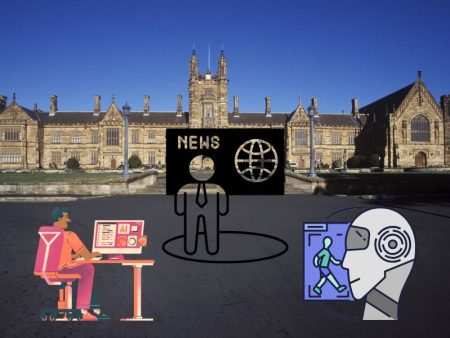You know the feeling—you’re sprinting for the bus, juggling groceries, or maybe just procrastinating on yet another email, and you think: “How do people even have time to read anymore?” Here’s the kicker: we don’t have to. Because audio is swooping in to rescue our attention spans, our pockets, our busy lives—and maybe even the way we think.
So is this it? Are we leaving text behind and stepping into a world where everything is listened to instead of read? Let’s dive into it.
✨ A Little Story (Because Stories Stick)
Picture me, mid-morning, coffee in one hand, trying to catch up on industry news while tossing socks into a laundry basket with the other. A typical multitasking moment. I hit play on an article narrated by my go‑to app. It starts in this calm, thoughtful tone—you know, like someone whispering secrets about how to hack your productivity?
Suddenly, I’m listening, not skimming. I pause, rewind, nod at my phone. That simple voice makes me more present than any article ever did. It’s not just about convenience; it’s a whole vibe change.
And that got me thinking… what exactly are we trading text for?
Why Audio-First Is Blowing Up
Let’s break it down.
- Hands-free, eyes-free
Running errands? Hands busy? Eyes elsewhere? Audio doesn’t mind. It slips into our routines like that perfect podcast episode. - Emotional connection
A voice can carry nuance—comfort, excitement, empathy. Reading can happen in silence, but listening? It pulls you in emotionally. - Accessibility
Dyslexia, vision issues, learning styles—audio blurs barriers. Everyone gets the message. Everyone. - Less friction
No login, no article paywall, no 2,000‑word commitment. Just tap and tune in. That’s where tools like AI Voice Maker No Sign Up come in—instant audio, no onboarding. - Micro-living
Bite-sized audio clips—2‑minute explainers, quick tips, briefing summaries—are perfect for the grab‑and‑go mindset. Delivered via AI Voice Generator Unlimited Words, they fit your tempo.
Conversation Beats Monologue
You ever feel like your notifications are screaming at you? I know, me too. But when that audio tone is friendly—like a pal chatting on the other end of the line—it doesn’t feel like noise. It feels like choice.
I was venting to a friend about feeling overwhelmed. They sent just a short voice memo: “Hey, you’ve got this.” That voice message landed harder than any text ever could. It got me thinking: our brains are wired for human voices, not just headlines and bullet points.
The Shift Happens in the Brain
Here’s the science part—promise it’s digestible.
Words? They involve reading, visual processing, cognitive translation. More effort, slower rhythm.
But listening? Auditory processing. We absorb tone, rhythm, emotion. Text is discrete. Audio is continuous. A voice can convey irony, relief, urgency—all instantly.
Ever heard someone say, “I’m fine,” in a voice that definitely meant otherwise? Our ears pick up on tension, hesitation, pride, softness. That’s the kind of thing audio does naturally.
In other words: audio is faster at delivering feelings.
Real-Life Places Audio Wins
- Commuters: Reading doesn’t work while driving. But a narrated long‑form piece? Perfect.
- Multitaskers: Jogging, cleaning, cooking—all prime audio real estate.
- Learn-anywhere students: Need a summary of a case study on the bus? Audio’s there.
- Late-night readers: Eyes tired, brain sleepy—listen instead of strain.
And because audio is more immersive, we actually remember more. (Science says so.) So it’s not just about convenience—it’s effective.
Voice Tech Is Getting Crazy Good
Remember when text‑to‑speech was robotic? A monotone machine lip‑syncing words? Now? We have voices with warmth, inflections, even regional accents. They breathe. They hesitate. They sound… well, human.
That’s not by accident. It’s what Text To Speech AI tools are teaching these models. Long narrative? Deep inhale. Sad tone? Softer pitch. Want energy? More oomph.
What used to need a voice actor can now be produced by AI—and I’m not just talking generic salesman voice. I mean real voices that nod when they’re saying something good, or pause just right to let the moment breathe.
But Hearing Isn’t Always Believing
Let’s pump the brakes for a second.
A voice with perfect pacing but hollow content? We’ll notice. Lack empathy or make missteps? No forgiveness.
Audio-first is powerful, yes. But it’s not a magic bullet. It’s you with a voice. It’s your tone, your pacing, your story. Technology is just the amplifier.
That’s why creators—and brands, honestly—need to think like directors. What’s the emotional arc? Where should the voice pause? What’s the mood before the “breakthrough moment”? (If there is one.)
Audio isn’t a crutch. It’s an instrument. And the musician still needs skill.
The Non‑Linear Audio Story
Here’s something fun: audio lets us tell stories in new ways. Non-linear narration. Flashbacks through soundscapes. Voice memos inside a documentary. Voice interacting with ambient street noise. A door creaks. A phone buzzes. Then the lesson.
I once heard a meditation audio that started with sounds of raindrops, then a voice guiding me like I was literally under the shelter. It dropped me into the moment. Then it taught. It lived the lesson, before explaining it.
That’s audio creativity. It’s visceral. It’s immersive. And it’s beyond text.
Empathy in Your Ear
When tools like AI Voice Generator Unlimited Words give us the power to generate voice at scale, we have a real responsibility. Because if we’re not careful, we can end up with soulless narration that drains attention rather than igniting it.
But when used well? Audio can care. A soft tone can comfort. A warm pause can reassure. A gentle shift in pitch can show connection. That’s huge in mental health content. In kids’ bedtime stories. In coaching practices.
It’s not just about listening. It’s about feeling heard.
But How Much Are We Moving Beyond Text?
Let’s keep it real. We’re not abandoning text anytime soon.
Text has power—scan-ability, shareability, SEO juice, permanence. It’s searchable. It supports diagrams. It lives in silences.
Audio complements it. It expands the landscape. We need both. Audio gives space, emotion, rhythm. Text gives clarity, reference, quick skim.
We’re heading toward hybrid experiences: a blog post with transcript, audio clip, summary bullets, a few annotations, embedded visuals. You choose how you consume.
That’s audio‑first. Not audio‑only.
Where We’re Heading Next
- On‑demand lessons
Ever wish your training session could just talk you through a task while you do it? Audio can micro-guide you, step by step, in real-time. - Interactive audio-based apps
Think voice‑driven coaching, guided journaling with moments for your own response, smart reminders with mood-adjusted tone. - Personalized voices
AI will generate voices that feel like you, or like your favorite teacher, or like someone you’re comfortable with. Emotional familiarity matters. - Voice search and summaries
Ask your phone to “tell me the top three takeaways from this article.” It’ll read it—and cue the tone to match. No screen needed.
So Are We Moving Beyond Text? Nah, We’re Moving Forward
Text isn’t dying. But our relationship with it is evolving.
Audio is growing up. It’s becoming more than “read-aloud.” It’s becoming designed audio experiences.
For readers. For listeners. For people who want content that speaks to them, not at them.
And for that? I’m excited.
TL;DR (Or Feel Free to Just Listen)
- Audio‑first means putting voice before text—designed experiences for modern life.
- It’s about convenience, yes—but more importantly, emotional connection.
- Tech like AI Voice Text To Speech Unlimited Characters is helping with depth, range, breath.
- But it’s not magic. It’s craft. You still need direction, pacing, nuance.
- This isn’t a world without text. It’s a world with more ways to communicate.
Wanna Try It?
- Take your next blog post. Use AI Voice Maker No Sign Up, create a quick audio version.
- Listen—in earbuds, while doing dishes. Notice where you felt more than heard.
- Tweak tone, pause, pacing. Make it feel alive.
And when you do—drop a comment or shoot me a voice note (yeah, even AI-lovers have that human touch 😉). I want to hear what moved you.
Because here’s one thing I know for sure: the rise of audio-first culture is more than technology. It’s about connection. And that… is timeless.


